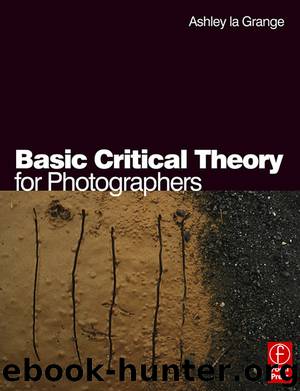Basic Critical Theory for Photographers by la Grange Ashley

Author:la Grange, Ashley
Language: eng
Format: epub
Publisher: Taylor and Francis
6 Abigail Solomon-Godeau, Inside/Out
This is a summary of the essay as it appeared in Public Information Desire, Disaster, Document (SFMOMA 1994).
Solomon-Godeau sees Sontag’s On Photography as critical of photography’s colonisation of the world and points out that Sontag found that there were certain approaches to photography, in particular, that objectified people. These approaches prevented the viewer having empathy with the subject and Arbus’s work was typical of this. Arbus photographed deviants (social, physical and those that looked deviant) in a way that prevented compassionate involvement. As a result, Sontag sees her as a morbid voyeur.
Sontag feels that for Arbus the camera removes ‘. . . moral boundaries and social inhibitions, freeing the photographer from any responsibility toward the people photographed’ (Sontag, p. 41). She feels this is the point of photography, to visit people, not to interfere in their lives, to be a ‘supertourist’ (Sontag, p. 42), colonizing new experiences in a fight against boredom. Like fascination, boredom depends ‘. . . on being outside rather than inside a situation . . .’ (Sontag, p. 42).
Solomon-Godeau argues that Sontag’s criticism of the ‘touristic’ and irregular attitude behind Arbus’s work depends in part ‘. . .on the binary couple inside/outside’ (p. 49). This duality [Solomon-Godeau uses the word ‘binarism’, which stems from de Saussure’s theory of language-semiology] is a part of much photographic criticism dealing with ethics and politics. In Sontag’s example of Arbus’s work, the insider position is seen as being the ‘good’ one and the alienated outsider position the ‘bad’.
Solomon-Godeau sees Sontag as a humanist dealing with the ethics of photography (empathy etc.). She sees Martha Rosler, the left leaning author of the essay In, Around and Afterthoughts (On Documentary Photography), as dealing with the politics of photography (power and powerlessness etc). Rosler calls outsider photography ‘victim photography’ and sees one alternative to it as self-representation, which would give power to the ‘victims’. However, from both Sontag’s and Rosler’s perspectives, the documentary photographer, the tourist etc. commits an act of violence against, and takes something from the subject, while only seeing a partial and probably distorted view of the subject.
Solomon-Godeau points out that this duality is far more complex than it seems. We see truth as being on the inside, yet define objectivity as being on the outside. From Walter Benjamin to Sontag a recurring view held by critics is that by its very nature photography is unable to do anything but show superficial appearances. If this is true, then how does one tell the difference between the insider’s photograph and the outsider’s? If the difference can be seen, how is it shown? Do insiders perceive or present things differently? Do they objectify people less?
The work exhibited in the exhibition Public Information: Desire, Disaster, Document provided an opportunity to see both the paradoxes and ambiguities involved in the inside/outside duality. On the one hand, Ed Ruscha’s Every Building on the Sunset Strip (1966) and Dan Graham’s Homes for America, (1965–1970) are the works of absolute outsiders, concerned only with the exterior of the subject, which is banal.
Download
This site does not store any files on its server. We only index and link to content provided by other sites. Please contact the content providers to delete copyright contents if any and email us, we'll remove relevant links or contents immediately.
Shoot Sexy by Ryan Armbrust(17142)
Portrait Mastery in Black & White: Learn the Signature Style of a Legendary Photographer by Tim Kelly(16484)
Adobe Camera Raw For Digital Photographers Only by Rob Sheppard(16388)
Photographically Speaking: A Deeper Look at Creating Stronger Images (Eva Spring's Library) by David duChemin(16161)
Bombshells: Glamour Girls of a Lifetime by Sullivan Steve(13109)
Art Nude Photography Explained: How to Photograph and Understand Great Art Nude Images by Simon Walden(12348)
Perfect Rhythm by Jae(4621)
Pillow Thoughts by Courtney Peppernell(3397)
The Book of Joy by Dalai Lama(3218)
Good by S. Walden(2915)
The Pixar Touch by David A. Price(2740)
Fantastic Beasts: The Crimes of Grindelwald by J. K. Rowling(2543)
A Dictionary of Sociology by Unknown(2518)
Humans of New York by Brandon Stanton(2379)
Read This If You Want to Take Great Photographs by Carroll Henry(2303)
Stacked Decks by The Rotenberg Collection(2270)
On Photography by Susan Sontag(2131)
Photographic Guide to the Birds of Indonesia by Strange Morten;(2088)
Insomniac City by Bill Hayes(2084)
